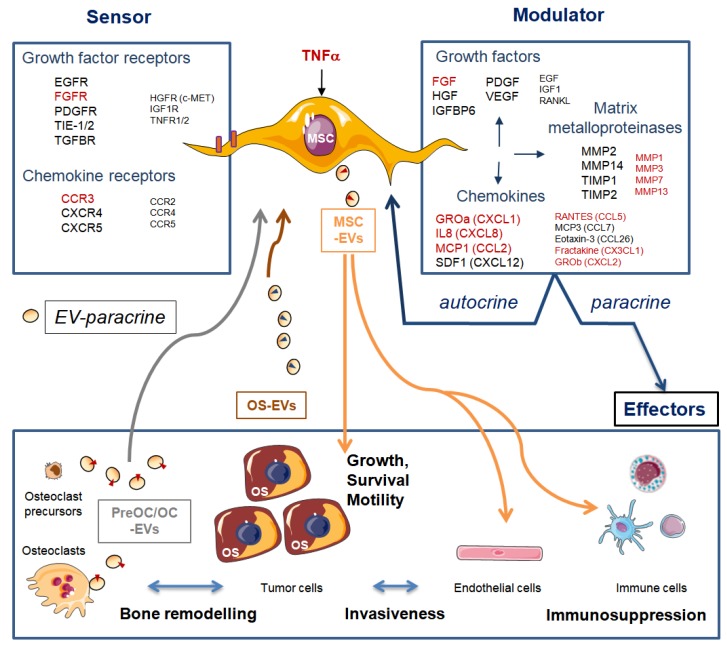Figure 5.
Sensing and modulating roles of mesenchymal stem/stromal cells (MSCs). MSCs constitutively express many mitogenic growth factors, chemokines, and matrix metalloproteinases at various levels. High/intermediate and low levels are represented by large or small font size, respectively. MSCs respond to tumor necrosis factor alpha (TNFα) by increasing expression (indicated in red) of some growth factor receptors (GFR), growth factors (GF), chemokine receptors (CR), chemokines, interleukins (IL), and matrix metalloproteinases (MMP) [61]. MSCs have autocrine and paracrine trophic properties, as all of these growth factors are able to act on several effectors of the tumor ecosystem (tumor, bone cells, endothelial cells, and immune cells). MSCs can also secrete extracellular vesicles (EVs) that convey diverse contents (see text for details), and they can receive information through EVs from bone pre-osteoclasts (pre-OC) and osteoclasts (OC) and tumor cells. EGFR: epithelial GFR; VEGFR: vascular endothelial GFR; TIE-1: angiopoietin receptor; TGFBR: transforming growth factor beta receptor; TIMP: tissue inhibitors of MMP; CXCL: chemokine (C-X-C motif) ligand; CCL: chemokine (C-C motif) ligand; GROα/β: growth-regulated oncogene alpha/beta (also known as CXCL1/2); MCP1/3: monocyte chemoattractant protein (also known as CCL2/7); SDF1: stromal cell-derived factor (also known as CXCL12); RANTES: Regulated on Activation Normal T Cell Expressed and Secreted (alias CCL5).

